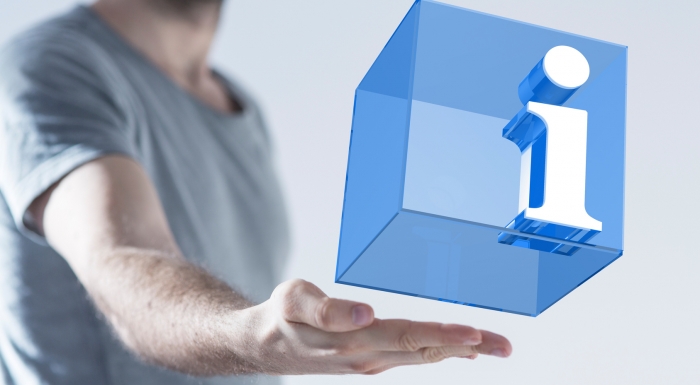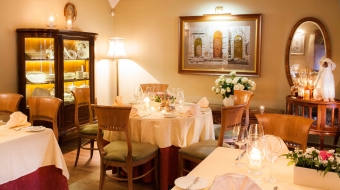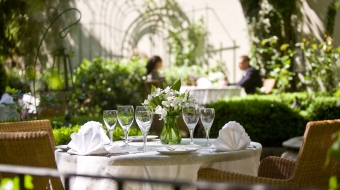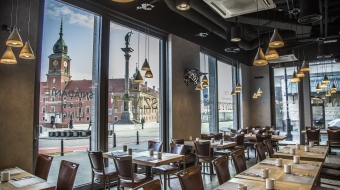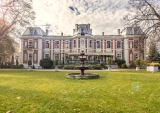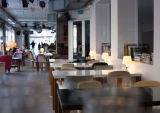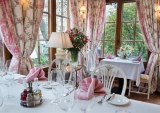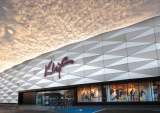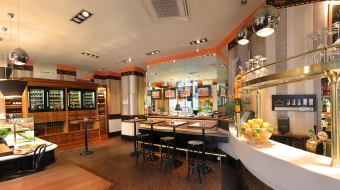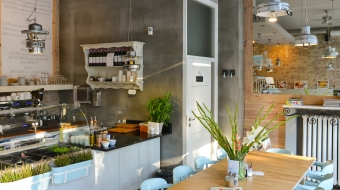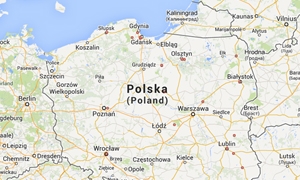- Podkarpackie ‒ Rzeszów
- Małopolskie ‒ Kraków
- Śląskie ‒ Katowice
- Opolskie ‒ Opole
- Dolnośląskie ‒ Wrocław
- Lubuskie ‒ Gorzów Wielkopolski
- Wielkopolskie ‒ Poznań
- Lubelskie ‒ Lublin
- Łódzkie ‒ Łódź
- Świętokrzyskie ‒ Kielce
- Mazowieckie ‒ Warsaw
- Podlaskie ‒ Białystok
- Warmińsko-Mazurskie ‒ Olsztyn
- Kujawsko-Pomorskie ‒ Bydgoszcz
- Pomorskie ‒ Gdańsk
- Zachodniopomorskie ‒ Szczecin
The most important geographic regions are: Pomerania, Masuria, Great Poland, Mazovia, Podlachia, Silesia, Little Poland and Subcarpathia.
Places in Poland important in terms of tourism:
The Baltic sea whose broad sandy beaches are an undoubted advantage, is said to be one of the most beautiful sea in Europe.
The Masurian Lakeland is a land of 4000 lakes, dense forests and rivers friendly to canoeists. Masurian lakes were the only place from Europe to reach the top fourteen wonders of nature in the world in a competition organised by New7Wonders foundation.
Lesser Poland Upland is an area where numerous attractions such as the Kraków-Częstochowa Upland and the Świętokrzyskie Mountains await. The Carpathian Mountains and the Sudetes, winter sports and hiking centres, are also important areas in Poland.
Polish geography is dominated by lowlands, areas below 300 metres above sea level. They cover up to 91% of the area of the country.
The northern parts are dominated by lowlands and lakes, while Southern Poland is full of mountains and uplands. Three main mountain ranges running in Poland are: the Carpathian Mountains, The Sudetes and the Świętokrzyskie Mountains. The highest place in Poland is Rysy peak ‒ 2499 m.a.s.l., whereas the lowest one is located in a depression ‒ Raczki Elbląski (1,8 mbsf).
The most famous peaks in Poland are:
- Świnica ‒ 2301 m.a.s.l. (High Tatras)
- Kasprowy Wierch ‒ 1985 m.a.s.l. (Western Tatras)
- Giewont ‒ 1894 m.a.s.l (Western Tatras)
- Babia Góra 1725 m.a.s.l. (Żywiec Beskids)
- Śnieżka 1602 m.a.s.l. (Karkonosze)
- Łysica 610 m.a.s.l. (Świętokrzyskie Mountains)
The Vistula is the longest river in Poland (1047 km long), whereas, Hańcza is the deepest lake (113 m deep). There are about 9300 lakes in Poland. They cover 1% of the area of the country.
List of car border checkpoints:
- To Ukraine: Medyka, Korczowa, Hrebenne, Dorohusk, Zosin.
- To Belarus: Terespol, Koroszczyn, Sławatycze, Kuźnia Białostocka, Połowce, Bobrownik.
- To Russia: Gołdap, Gronowo, Bezledy
- To Lithuania: Ogrodniki, Budzisko
Polish traditions and holidays
Poles love celebrating. The oldest Polish rituals, especially those from pagan times, has been a relic of the past and an element of fun despite losing their old character.
In Poland, the most important are church and national holidays such as: Christmas, Easter, National Independence Day (November 11), May 3rd Constitution Day. Other popular holidays are: International Women’s Day (March 8), Mother’s Day (May 26), Grandmother’s Day (January 21), Children’s Day (June 1). Family meetings and gifts are a common sight on those days. Polish celebrations would not be so unique without outstanding Polish cuisine. Almost every holiday is associated with food. Tables are particularly plentiful on Christmas and Easter.
Andrzejski should be mentioned from among popular and nurtured traditions. It is the last party before Advent and includes various fortune-telling games for the following year. Another interesting custom takes place on the first day of Spring ‒ traditional drowning of a straw dummy, known as marzanna which symbolises the passing winter.
Easter
Easter is the oldest and most important Christian holidays. It commemorates Jesus Christ’s Resurrection. Easter, a moveable holiday, is celebrated on the first Sunday after the first full moon of Spring. The holiday is preceded by Holy Week when Christians commemorate the most important events of their faith. Holy Week begins with Palm Sunday. Bought and hand-made palms are blessed in churches on this day. Święconka, a decorative basket with food which is blessed in a church, is prepared on Holy Saturday. Easter cannot do without eggs which are a symbol of life. After the Resurrection mass, families have Easter breakfast on Easter Sunday. Some of the dishes on the Easter table are: żurek [soup], pâté, roast meat, cold meats, stuffed eggs, leavened pound cake and mazurek [cake]. Children are the most happy ones on the second day of Easter ‒ Wet Monday. Pouring each other with water symbolises purifying body and soul, whereas, pouring an unmarried girl ensures that she will get married soon.
Bank holidays
All Sundays and:
- January 1 ‒ New Year
- January 6 ‒ Epiphany (introduced on 1st January 2011)
- First day of Easter (Easter Sunday, moveable)
- Second day of Easter (Easter Monday, movable)
- May 1 ‒ National Holiday (Workers’ Day)
- May 3 ‒ May 3rd Constitution Day (Passing a constitution in 1791 anniversary)
- First day of the Green Week (liturgical descent of the Holy Spirit, moveable)
- Corpus Christi (moveable)
- August 15 ‒ The Assumption of the Virgin Mary into Heaven (liturgical holiday is mentioned by the law; the date concur Armed Forces Day introduced in 1992)
- November 1 (All Saints’ Day)
- November 11 ‒ National Independence Day (regaining independence in 1918 anniversary)
- December 25 ‒ first day of Christmas
- December 26 ‒ second day of Christmas
Poland in Schengen
Thanks to Poland joining the Schengen area, Polish citizens have a right to travel free all over the area. You can cross borders between countries of the Schengen area anytime and anywhere you want. According to immigration and visa laws, it is recommended to have an identification card, which confirms citizenship of an EU-member country, while travelling. Although identity checks do not occur when crossing a border, random checks may take place.
Currently, the Schengen area includes the following countries: Austria, Belgium, Czech Republic, Denmark, Estonia, Finland, France, Greece, Spain, the Netherlands, Lithuania, Luxembourg, Latvia, Malta, Germany, Poland, Portugal, Slovakia, Slovenia, Sweden, Hungary, Italy, Norway, Switzerland, Iceland and Lichtenstein.
Third world countries citizens
Citizens of the third world countries must have a valid travel document and, if it is required, a visa to enter the Schengen area countries, including Poland. Rules regulating foreigners’ stay in the Republic of Poland allows any foreigner, regardless of origin, faith, political and social views, to enter the country. Still, Polish government refuse to admit those who had or have law problems to the country. Depending on purposes of a visit, foreigners are allowed to remain in Poland thanks to: a valid passport which expires in more than 3 months after entering Poland, a visitor’s visa, a temporary visit permit or a permanent visit permit. Citizens of countries with which Republic of Poland signed bilateral visa obligation lifting agreements need only passports to cross the Polish border. List of countries whose citizens have a right to travel to Poland without visas and other information concerning rules regulating foreigners’ stay in Poland can be found on the Ministry of Foreign Affairs Republic of Poland website.
Polish currency
Zloty (zł, PLN) is the Polish currency. It divides into 100 grosz (1 zł = 100 gr). Banknotes in nomination of: 10, 20, 50, 100 and 200 zlotys as well as coins in nomination of: 1, 2, 5, 10, 20, 50 grosz and 1, 2, 5 zlotys are in currency circulation.
Currency exchange points are usually located in city centres, stations, airports, some hotels and places particularly popular with tourists. Most of them are opened from 9:00 a.m. to 7:00 or 8:00 p.m., but some of them are opened around the clock. A foreign tourist can carry out all financial operations also in banks. They usually charge a small fee which amounts to 1-2% of an exchanged sum. Open access ATMs of different chains and banks are located in bigger towns and urban agglomerations. It is possible to withdraw multiple banknotes in denomination of 50 zlotys from them, usually twenty four hours a day.
Payment in euro
More and more places in Poland accept payment also in Euro. It can be used to pay in most Tesco, Carrefour and Real shops, gas stations such as Orlen and Statoil, many restaurants, shops at the airports as well as in large shopping centres.
Payment cards
You can pay with credit cards in supermarkets, gas stations, restaurants and hotels in Poland without a problem. Both imprinted (Visa, Mastercard) and electronic (Visa Electron, Maestro) cards are accepted. Still, you have to pay cash in smaller towns, kiosks and local shops. A credit card is required when renting a car or paying online (for example for a flight ticket).
Tips
It is not required to tip in Poland. You can do it when you are satisfied with service. Usually, a tip amounts to 10% of the bill, better restaurants include it automatically in the bill as a service fee. It is not customary to tip a taxi driver. A tip for a hotel staff usually amounts to 5-20 zlotys (depending on the standard of a hotel where you stay).
Example prices of products/services in Poland:
- Bread: about 2-3 zlotys
- Milk: about 2.5 zlotys
- Water (1.5 l): about 1.80 zlotys
- Beer (0.5 l): about 3.5 zlotys
- Coca-Cola (1 l): about 3.9 zlotys
- Doughnut: about 1.5 zlotys
- Double room in a hotel: about 150-450 zlotys per night
- Double room in a pension: about 45-60 zlotys per night
- Dinner: starting from 20 zlotys
- Cinema ticket: about 13-24 zlotys
Poland ‒ using telephones
Tourists can use phone booths, which can still be easily found in the whole country, to make phone calls, but you must have a phone card to use them. It can be bought in kiosks and gas stations.
When making a local or an intercity phone call, remember to dial an area code of a given place. The list of area codes can be found on Telekomunikacja Polska website. Phoning from a landline phone is different from phoning from a mobile. When calling from a landline phone to a mobile, you must dial the subscriber number.
- When you call from a landline one to another landline one, you must dial an area code and the subscriber number.
- When calling from a mobile to another mobile, just dial the subscriber number.
- When calling from a mobile to a landline phone, dial an area code and the subscriber number.
Emergency numbers:
Landline phone:
- 999: ambulance
- 998: fire brigade
- 997: police
- 981: road assistance
- 986: municipal police
Mobile phone:
To get though to a police station in a given town, you must additionally dial an area code, for example 22-997 for Warsaw. Emergency calls from phone boots in towns are free of charge. There is also a universal emergency number ‒ 112. You do not have to dial an area code before it. Your phone call will be put through to a chosen emergency service.
Police
In Poland, police officers have a right, among others, to:
- check one’s identification (with justification) to establish their identity
- apprehend anyone who poses a threat to other people’s life, health and possessions. perform a strip search as well as check luggage and cargo content in harbours, stations and any mean of transport in case of a justifiable suspicion of a prohibited act under threat of punishment.
- apply measures of coercion such as: handcuffs, truncheon, straitjacket, irritant gas or imposing financial penalties (fines)
Municipal police
The municipal police are a special type of urban police. Their aim is to protect public order within city limits. The municipal police have rights similar to the rights of the police in various cases. Their duties are: traffic control, maintaining peace and order in public areas, protecting public utility facilities etc. The municipal police can give fines for various offenses committed within city limits, for example for parking offences and alcohol consumption where it is prohibited. They often cooperate with organisers and other services during gatherings and public events to maintain order.
GOPR
GOPR stands for Górskie Ochotnicze Pogotowie Ratunkowe [Mountain Volunteer Search and Rescue]. It is a national rescue emergency service mainly focused on mountainous areas. Helping tourists in the mountains whose life or health is at danger is GOPR main task. It tries to prevent accidents and also acts in aid of mountain environment. GOPR rescuers can be recognised due to characteristic red outfits. Its mark is an oval symbol with a blue cross in the middle or just by a cross directly on clothes. The main GOPR headquarters is located in Zakopane.
Foreign embassies in Poland
If during your stay in Poland your documents or money were stolen, your life or health is in danger, you can always get help from an embassy and a consulate of your country which are located in Poland.
The list of diplomatic agencies in Poland can be found on the Ministry of Foreign Affairs website.
Poczta Polska
Poczta Polska is the national postal service in Poland. It offers two types of letters: registered and 2nd class. A registered letter is more expensive but it reaches the addressee faster. A domestic registered mail is delivered the next working day after it is sent if it is posted before 3:00 p.m. When a letter is sent after this hour, it is treated as posted on the next day. An international registered mail is delivered within 3 working days to an European country and within 5 days to any other place in the world. A 2nd class letter is cheaper but delivery takes more time ‒ in Poland, it is delivered in about 3 days after posting. Post offices work on weekdays, usually from 10:00 a.m. to 6:00 p.m., and Saturdays till afternoon hours. Normally, offices in large cities are opened longer. More information can be found on Poczta Polska website.
Tourist Information
Centre Detailed pieces of information about Poland are given in tourist information centres, which are divided into certified and uncertified. All certified tourists information centres provide information in at least one foreign language. Their services are usually expanded when compared with the uncertified ones. The certified centres are marked with stars (*) of Polish Tourist Information System which define their category of standards in terms of services.
- Tourist Information Centre *: it provides information in one foreign language (basic level) and has free local promotional materials.
- Tourist Information Centre **: it provides information in one foreign language (conversational level) and has free local promotional materials related to its area. There are also computer stations with Internet connection at one’s disposal.
- Tourist Information Centre ***: it should be located in a city centre or near to a main tourist route. It provides information in two foreign languages (good level), has free promotional materials about the closest area, both regional and supralocal, and computers with Internet connection.
- Tourist Information Centre ****: it has to be located in a city centre or near to a main tourist route. It provides information in three foreign languages, has free promotional materials about the closest area, both supralocal and regional (also in foreign languages), as well as thematic materials. Such centre offers two computer stations with Internet connection and a multimedia kiosk, even after office hours, at one’s disposal.
Hotels
Hotels in Poland are classified according to a star system, from one to five stars. Among them, hotels belonging to international chains, such as: Hilton, Holiday Inn, HP Park, Ibis, Marriott, Mercure Novotel, Orbis, Prestige Hotels, Qubus Hotel, Radisson SAS, Sheraton, Sofitel, can be found. The number of cosy pensions and small hotels representing high standards in Poland has been constantly growing. Also historical places, including palaces, castles and mansions, function as hotels. Such hotels and pensions try to preserve their old character, they are often fantastically restored and located in picturesque areas.
Hostels
Hostels, which are much cheaper than hotels, are popular particularly with young people. It is a great accommodation option for backpackers. Hostels are usually located in centres of big Polish cites. Hotels and hostels in Poland: www.booking.com
Rural Tourism
Rural tourism, that is spending the night in rural houses, is popular in Poland. Usually, you can come across assigned rooms inside owners’ house. A stay in such place gives you a chance to commune with nature and observe the life of Polish countryside. Low accommodation price and clean air are additional assets of rural tourism. The biggest number of such places can be found in Masuria, Suwałki region and Małopolskie province. They are located near to forests, lakes and rivers. You can try traditional Polish dishes in many places like these.
Private Apartments
You can stay in guest rooms in both big cities and small tourist towns. Travel agencies as well as some tourist information centres act as an agent when renting such place. Accommodation price depends on standard of lodgings and location. Still, it is usually lower than in a hotel.
Suites
You can rent suites, which are a great option if you are planning to stay in Poland for a longer time, in many Polish cities. They are fully-equipped to make you feel like home. A suite contains a kitchen where you can prepare a meal and a living room where you can receive guests. Such form of accommodation provides you with full independence. Prices are various, it all depends on standard and location of a suite. It can also be rented for a shorter period of time, for example for a business trip.
Tourist houses, lodges
Tourist houses are places which usually offer accommodation in rooms for several people with basic sanitary facilities. Lodges are located in the Sudetes and the Carpathian Mountains. Everyone is welcomed here, if rooms are full, tourists can sleep on the floor.
Electricity , units of measure, time zone in Poland, Alcohol consumption in Poland.
Electricity in Poland
In Poland, voltage is adjusted to the EU-standards ‒ 230 V current runs in Polish sockets. They are marked with 2P+Z. A bolt with a round section is used as a ground in a socket.
Units of measure in Poland
The metric system is applied in Poland. The International System of Units (SI) are the basic units of measure in Poland, so 1 metre (1 m= 100 cm), 1 kilogram (1 kg= 1000 g), 1 second, among others. The Celsius scale (degrees C ‒ oC) is the commonly used method of marking temperature. Atmospheric pressure is given in hectopascals (hP) or in milimetres of mercury column. Speed is measured in kilometres per hour (km/h)
Time zone in Poland
Central European Time, that is solar time of the meridian 15° east, which runs westwards from Jelenia Góra and Zielona Góra and eastwards from Szczecin, is the basic time in Poland. CET (UCT +1) is applied in winter, that is from the last Sunday of October till the last Sunday of March. It is replaced by Eastern European Time in summer. We put the clock forward an hour at 1:00 a.m. GMT (2:00 a.m. in Poland) on the last Sunday of March, whereas, on the last Sunday of October ‒ we put it back an hour.
Alcohol consumption in Poland
Alcohol consumption is allowed in Poland for people above 18 (it refers to both low- and high-alcohol beverages). The same goes with smoking. Still, you must not drink outside places where it is allowed (restaurants, bars, beer garden). Smoking is prohibited in many food establishments, sometimes there are closed, air-conditioned zones for smokers.
Traffic Regulations
- Seatbelts ‒ all travelling by car must wear seatbelts ‒ both passengers in front and back seats. Children under 12 should travel in special certified car seats.
- Lights ‒ lights must be turned on around the clock all year long when travelling in Poland.
- Mobile phones ‒ talking on the phone while driving is allowed only when it is equipped with handsfree functions or a speakerphone. Parking ‒ when driving in Poland, make sure if you have to pay for parking in a given place. D-44 sign informs about it.
- Parking metres can be found in some cities. If you do not pay for a parking space where it is necessary, you may get a ticket.
- Driving a car and alcohol ‒ A driver is allowed to have a BAC of 0.2 per cent. Having over 0.5 mg/l of alcohol in blood is a crime which is liable to a two-year imprisonment.
Speed Limits on Polish roads:
- Built-up area ‒ 50 km/h (31 mph)
- Outside built-up area ‒ 90 km/h (56 mph)
- Living area ‒ 20 km/h (12 mph)
- Dual carriageway expressway ‒ 120 km/h (75 mph)
- Single carriageway expressway ‒ 100 km/h (62 mph)
- Dual carriageway with at least two lines per each side ‒ 100 km/h
- Motorway ‒ 140 km/h (87 mph)



